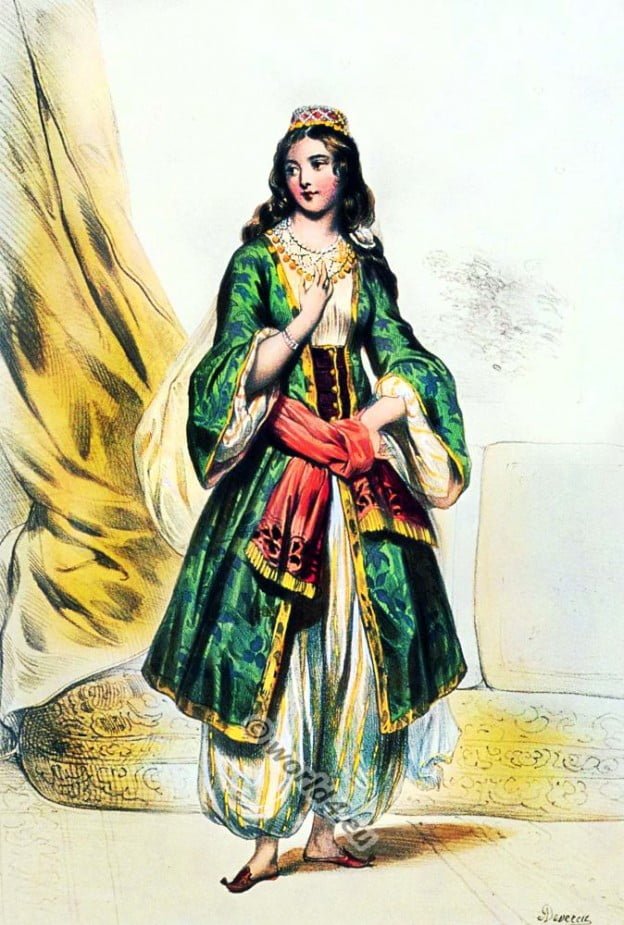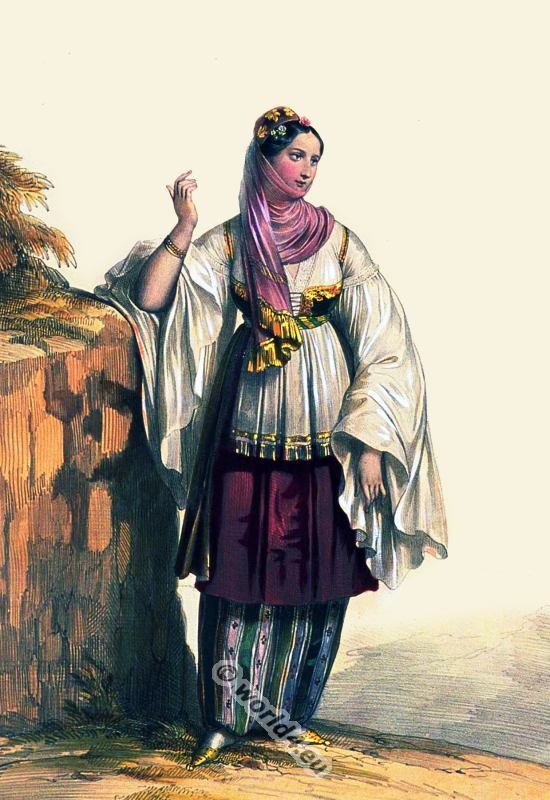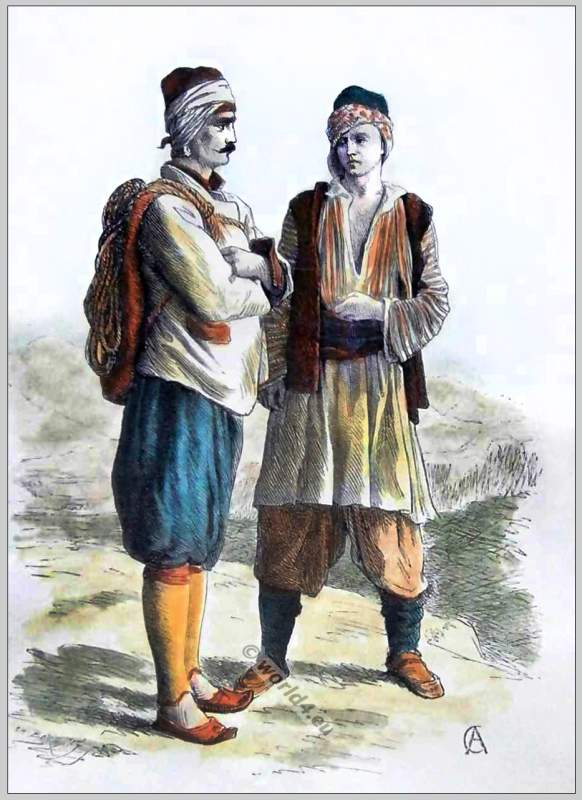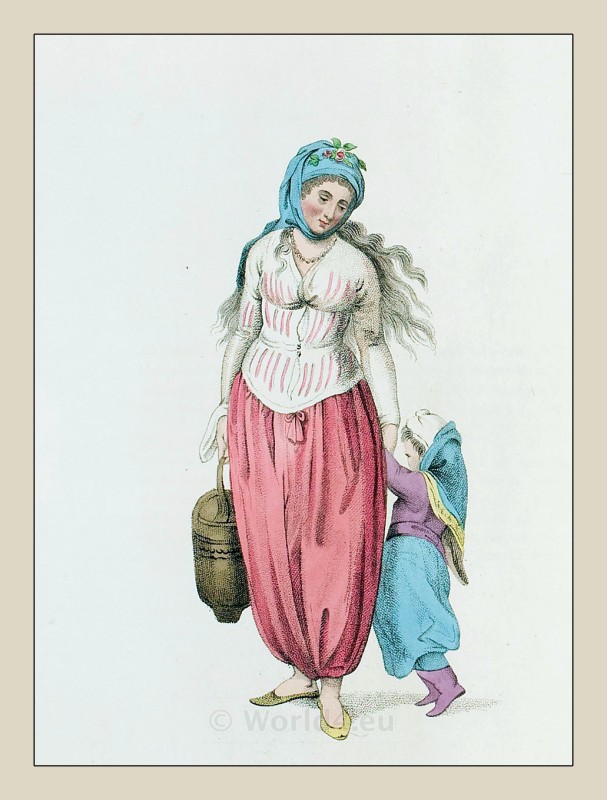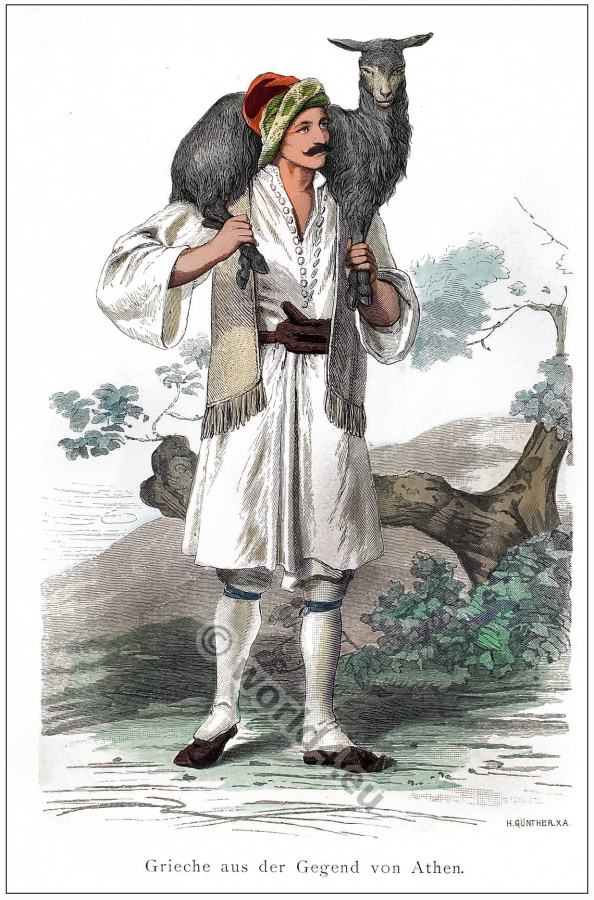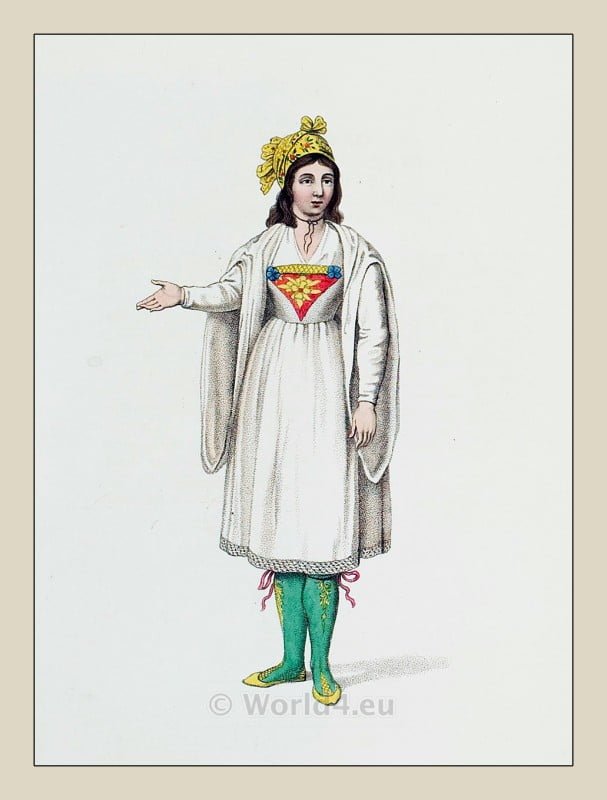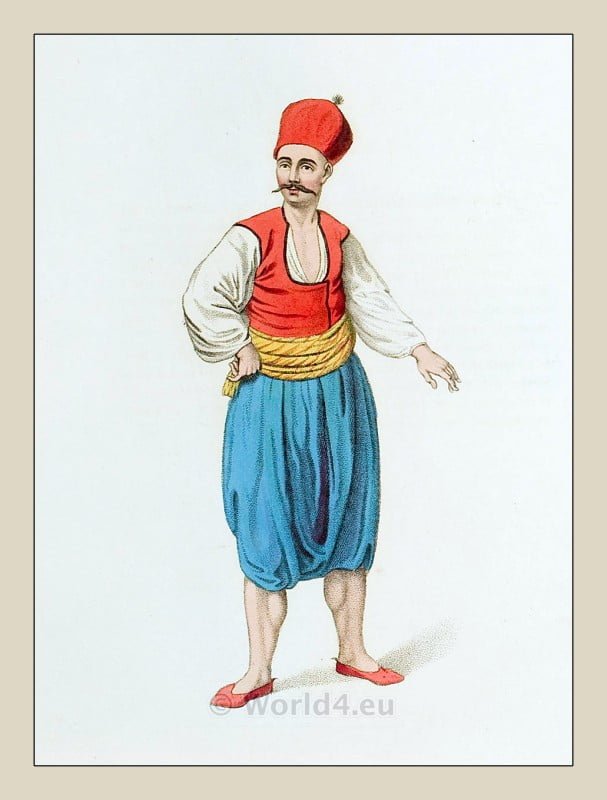Femme Grecque. Modes et Costumes Historiques par Xavier Willemin.
Tag: Greece national costumes
Woman from the island of Santorini. Femme de l’ile de santorin
Greek costume from the island of Santorini, 19th century. Femme de l’ile de santorin.
Men of Sparta in traditional Greece costumes, 19th century.
Men of Sparta in traditional Greece costumes, 19th century.
The fustanella, the pleated skirt on the Balkan Peninsula
The fustanella, the pleated skirt (Albanian fuštan) is on the Balkan Peninsula since the 5th century demonstrated.
A Greek woman of the Island of Marmara (with her child).
The island of Marmora, according to Strabo, was known to the ancients by the name of Proconnesus.
A man from the area of Athens with a sheep in the mountains.
A man from the area of Athens. Historical and folk costumes by Franz Lipperheide.
Women of the Andros Island. Ottoman Empire.
THE dress of the females of this island, like most of those in the other islands of the Archipelago, is very pleasing and interesting, especially when worn by the young and beautiful.
A female of the island of Naxos. Ottoman Empire ethnic groups.
The inhabitants of Naxos have been remarked even from the earliest times for their love of liberty.
A Greek Sailor in the service of the Ottoman Sultan.
The thirty-first Odah (regiment, chamber) of the Janissaries, whose symbol is an anchor, is employed in the sea service.

